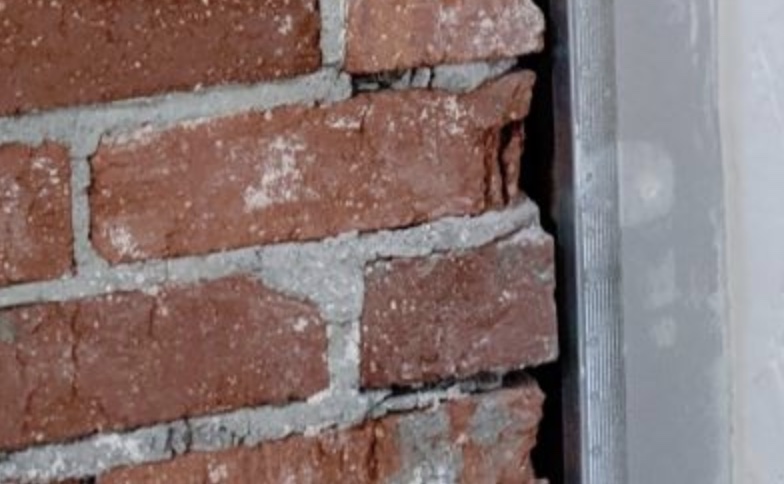Do you have any ideas for drywall to brick transition? Do not worry, we have you covered. Hanging and taping drywall on flat walls is tough work. Yet, transitions are not flat, making the work even harder and more challenging.
Today, we will try to help you how to make the drywall to brick transition as seamless as possible.
What is drywall?

Drywall is a construction material used to create walls and ceilings. It can also be used to create many design features, for example, arches, eaves, and other architectural specialties. The advantage of drywall is it is quick and easy to install, very durable, and requires only small repairs when damaged.
Some other common names for drywall include sheetrock, gypsum board, buster board, custard board, and wallboard.
In the middle of the 20th century, drywall construction became popular in the US as labor and time-saving alternative to lath and plaster.
Regular drywall is appropriate for most applications. But there are other drywall varieties that work in special circumstances.
For example, impact resistant drywall is great for high abuse areas like schools. Moisture resistant drywall is used for the bathroom, basement, and other areas high in moisture. Flexible drywall is great for veneer plaster. And of course, you have the fire-rated drywall, great for walls or ceilings that require a fire-rating of above 20 minutes.
Can you put drywall over a brick wall?
This is a common question among homeowners. And the simple answer is yes. The more complicated answer to this drywall to brick transition is yes if it is an interior wall in a dry area.
If the wall is prone to moisture, for example, a basement wall, you will have to find a higher-quality drywall. That means waterproof drywall or mold resistant drywall.
You can easily put it on with construction adhesive or tek screws, which are not drywall screws. It is best that you put adhesive in 8 spots, like dots on dice. Drill and tek screw the sides with 3 screws on each side. It will hold until the glue dries.
How to hang drywall on a brick wall?
One of the challenges you might have in such a transition is how to hang drywall on a brick wall. For example, say you have an interior brick wall in your home. And it is unsightly. And you want to cover it up with drywall.
Here is a step-by-step guide on how to hang drywall on a brick surface.
- Start by measuring and cutting the first piece. This will give you an idea of how large it should be
- Now, add evenly spaced globs of drywall compound to the back of the drywall. These serve as an adhesive to hold the wall in place
- Once you have applied the adhesive, place the drywall on the brick surface. Use masonry nails driven into the mortar to hold the sheet in place. Wait for the compound to dry
- Once the drywall compound has set, you can finish the job by using joint compound and tape to cover joints and nail holes
How to fill in a gap between a brick fireplace and sheetrock?
Speaking of transition between drywall and brick wall, here is another common problem that happens. Remember, materials used for building your house will shrink or swell over time. It depends on the climatic conditions and of course, age of the home. Most changes are usually minor.
Yet, a common problem that occurs in many homes is the development of a gap between a brick surface of a fireplace and the surrounding sheetrock. Remember, drywall and sheetrock are basically the same thing. Drywall is a panel made of gypsum plaster pressed between two thick sheets of paper. And sheetrock is a brand of drywall. Both of them are used for ceilings and walls.
Now back to the step-by-step guide on how to fill in the gap.
- Start by measuring the size of the gap between the brick surface and the drywall
- Use a 1/4 –round trim molding, one that is wide enough to cover the space of the gap. Now, cut the 1/4-round to the correct length, trying to match the height of the wall
- Place a tube of acrylic caulk into a caulking gun. Fill the gap using the gun with caulk. It will be covered by the ¼-round trim molding, but filling the gap will prevent air flow around the gap
- Now replace the caulk in the gun with a tube of construction adhesive. Follow the same routine to apply adhesive to the backside of the trim. When you are ready, place the trim onto the drywall and brick gap
- Paint or stain the trim to match the color of the drywall
Terminate drywall into exposed brick
Now here is another problem you might have. What is the best way to cleanly terminate drywall into an exposed brick wall? How to create a reasonably sealed transition? If you do not want to use drywall mud or caulk because it might look messy, there is a different option.
When you are looking for a clean line and you want to avoid things like trim, molding, quarter round, and similar, you need to look for some sort of drywall bead.
Bead and caulk is the best option, and you will get the clean line you want.
What to do when drywall meets windows, wood, and doors?
The standard technique for butting drywall to a non-drywall surface is flat tapping. Some examples include a brick chimney or a hand-hewn beam.
What is flat taping? It is a relatively quick technique that looks good enough. But the problem is it is prone to edge-cracking. Dissimilar building materials often expand and contrast, and shift and settle.
If you have such a problem, use L-beads to alleviate the problem. Yes, they are slower to install, but they perform much better compared to flat taping over time.
